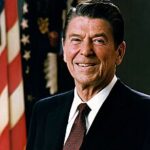The Revolutionary Tax Reform Decision
President Reagan signed the Economic Recovery Tax Act (ERTA) on August 13, 1981. This landmark legislation reduced individual income tax rates by 25% over three years. Corporate tax rates also fell significantly, dropping from 46% to 34%. The act simplified the complex tax code that had frustrated Americans for decades. 📊
Supply-Side Economic Theory in Action
Reagan’s advisors championed supply-side economics, believing lower taxes would stimulate investment. The theory suggested tax cuts would increase productivity and economic growth. Arthur Laffer’s famous curve illustrated how reduced rates could actually increase total revenue. This approach directly challenged traditional Keynesian economic thinking of the era. 💰
Comprehensive Deregulation Strategy
The tax cuts paired with aggressive deregulation across multiple industries. Reagan eliminated thousands of federal regulations affecting banking, telecommunications, and transportation. The administration believed free markets would allocate resources more efficiently than government bureaucrats. ⚠️ Critics warned these changes would destabilize the economy and increase inequality.
Impact:
Immediate Economic Recovery
The Economic Recovery Tax Act helped end the devastating stagflation of the 1970s. Inflation dropped from 13.5% in 1980 to 3.2% by 1983. Unemployment, initially rising during the transition, fell from 10.8% to 5.4% by 1988. GDP growth averaged 4.2% annually during Reagan’s second term, exceeding historical averages significantly. 📊
Long-term Economic Transformation
The 1980s became known as a period of sustained economic expansion. Stock markets soared, with the Dow Jones reaching record highs throughout the decade. Business investment increased as companies reinvested their tax savings into equipment and facilities. Entrepreneurship flourished as regulatory barriers fell across numerous industries. 💰
Mixed Social and Political Consequences
Income inequality widened as higher earners benefited most from tax reductions. Federal deficits grew substantially, tripling the national debt during Reagan’s presidency. However, millions of new jobs were created, particularly in emerging technology sectors. The reforms restored American confidence in free-market capitalism after the malaise of the 1970s. 🌍 International observers praised America’s economic renaissance, with many countries adopting similar supply-side policies.
